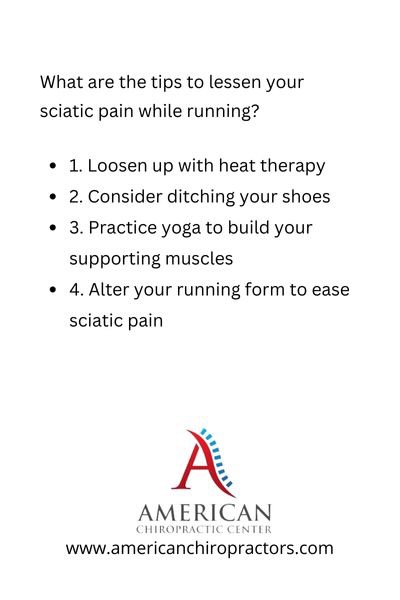Sciatica
What Are Some Tips For Runners With Sciatica?

Running is a great way to get exercise and improve your overall fitness, but it can also be risky if you have sciatica. Sciatica is a condition where the sciatic nerve becomes inflamed, which can cause pain in the lower back, hip, and leg.
Read More About What Are Some Tips For Runners With Sciatica

More Things To Know About What Are Some Tips For Runners With Sciatica
If you’re experiencing sciatic nerve pain, it’s important to understand what’s causing it and to follow a regular warm up routine before running.
Tips for Runners with Sciatica

Wearing supportive shoes can also help reduce stress on your spine when you’re running. This will help to prevent any further damage to the sciatic nerve and allow you to run with less pain.
Additionally, strengthening your core muscles will help improve your balance and stability while running.
By doing these things, you’ll likely find that running becomes more comfortable and less risky for people with sciatica.
However, even if you’re running without any pain or discomfort, it’s still important to take regular breaks in order to reduce fatigue and injury. Make sure that you stretch after your run as well as incorporate some light cardio into your routine in order to maintain optimal fitness levels.
And finally – whether you have sciatica or not – always listen to your body! If something feels wrong or uncomfortable while you’re running, take caution and stop immediately!
How Do You Reduce Sciatic Pain For Runners?
To reduce physical strain while running, maintain good posture by keeping your neck straight and avoiding excessive forward leanings throughout the run. Also avoid bouncing up and down as this will create added pressure on your lower back muscles and nerves.
Finally, be sure to take time for rest – even if that means taking a break halfway through your run – in order to avoid overtraining or aggravating your condition.
How To Resolve Sciatic Pain For Runners?
Sciatica is a condition that affects the lower back and leg, and it is usually caused by an injury or a problem with the spine. It can be a debilitating condition, and in some cases, it can even prevent you from running. However, with proper diagnosis and treatment, you can get your life back on track.
The first step in resolving sciatic pain is to understand the root cause of your pain. In most cases, sciatic pain is caused by compression of the spinal cord or nerve roots. This compression can be caused by a number of factors, including incorrect stretching or strengthening exercises, excessive wear and tear on the spine or surrounding muscles, age-related changes in the spine, and even pregnancy.
Once you have determined the source of your pain, it’s important to start stretching exercises to relieve pressure on the spinal cord or nerve roots. There are many different stretches that are effective for relieving sciatic pain; however, it’s important to find one that works best for you based on your specific situation and injury.
You should also perform these stretches regularly throughout your day as part of your regular routine to ease pressure on the spinal cord or nerve roots.
If you have persistent sciatic pain that has not responded to conservative measures such as stretching and strengthening exercises alone, it may be time to see a doctor for a correct diagnosis. A doctor will be able to rule out other causes of sciatic pain such as herniated disksdisks or tumors in the spine and recommend further treatment if necessary.
What Can Runners Do To Avoid Sciatica?
To reduce the risk of developing sciatica, it’s important to understand what sciatica is and how it may be affecting your running. Once you know these things, you can begin to take steps to reduce the stress on your lower back and sciatic nerve.
Specifically, here are some of the things runners can do when running with sciatica:
- Start with gentle stretching exercises to help reduce tension in the lower back and spine.
- Strengthen your core muscles by doing abdominal exercises and leg raises (both standing and seated).
- Try wearing supportive shoes – especially if you experience pain while running – and replace them as often as needed.
- Modify your running posture to reduce stress on these areas and increase comfort. For example, try leaning forward instead of bending at the waist or keeping your shoulders down during long runs or races.
- If symptoms persist despite following these tips, see a doctor for an evaluation or referral to a specialist such as a chiropractor or physical therapist who specializes in treating runners’ injuries.

























